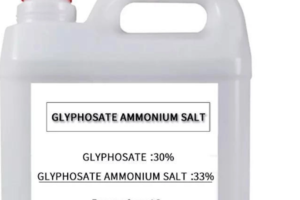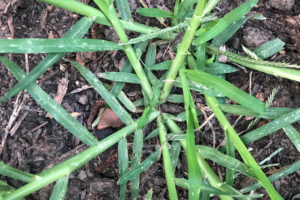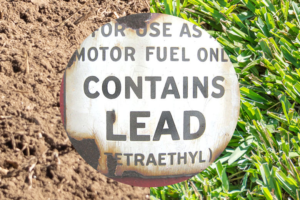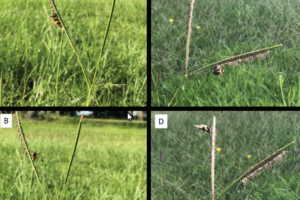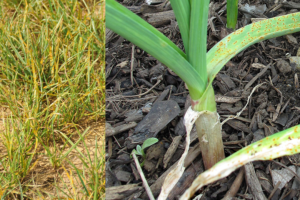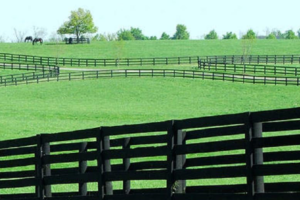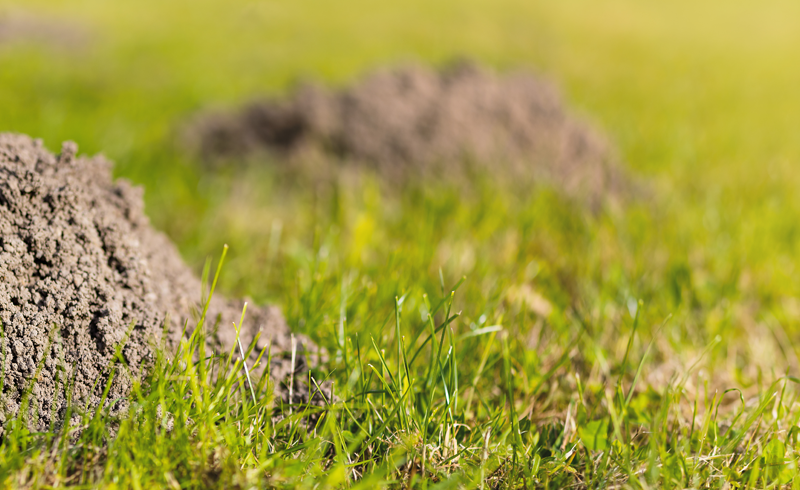
Introduction
Understanding Carbon Sequestration
Carbon sequestration means capturing and storing atmospheric carbon dioxide (CO2). It’s a crucial process that helps in the fight against climate change. All living organisms release CO2 through respiration, but it’s only through the photosynthesis of plants that atmospheric CO2 enters terrestrial ecosystems.
Plants play a vital role in this process. They absorb CO2, store carbon in their biomass, and contribute organic matter to soils. However, it’s important to note that plants and soils also produce CO2 through respiration. If they lose more stored carbon than the CO2 they take in through photosynthesis annually, terrestrial ecosystems can become net sources of CO2.
The Role of Turfgrass in Carbon Sequestration
Turfgrass has the potential to contribute significantly to carbon sequestration, provided the proper management practices are implemented. High management inputs can boost the biomass productivity of turfgrass, but higher soil organic carbon (SOC) is needed compared to low management inputs.
Choosing the suitable turfgrass species is also crucial. Species well adapted to the local climate and tolerant to stresses can maximize CO2 assimilation and biomass productivity. However, other factors, such as soil respiration, can considerably affect SOC.
The Need for Future Research
There’s a need for future research to document the complete carbon footprint of turfgrass and to identify the best management practices and appropriate turfgrass species to enhance carbon sequestration. This research will help us understand how to make the most of turfgrass’s potential for carbon sequestration and contribute to efforts to combat climate change.
| Turfgrass Type | Average Carbon Sequestration (kg CO2/ha/year) | Soil Organic Carbon Accumulation Rate (g/m^2/year) | Water Usage (mm/year) | Maintenance Level |
|---|---|---|---|---|
| Bermuda grass | 200 | 500 | 600 | High |
| Kentucky bluegrass | 150 | 400 | 550 | Medium |
| Zoysia grass | 180 | 450 | 500 | Low |
| Tall fescue | 160 | 350 | 650 | Medium |
| Ryegrass | 140 | 300 | 700 | High |
| St. Augustine grass | 190 | 550 | 550 | Low |
| Centipede grass | 170 | 400 | 600 | Medium |
| Buffalo grass | 220 | 600 | 500 | Low |
| Bentgrass | 130 | 250 | 750 | High |
| Bahiagrass | 210 | 500 | 550 | Low |
Turfgrass Systems
Description of Turfgrass Systems and Their Components
Turfgrasses are perennial plants that have long growing seasons and form a uniform ground cover. They are used extensively due to the increasing human population and urbanization. However, maintaining high-quality turfgrass requires repeated cultural practices, such as mowing, irrigation, and fertilization.
Some intensively managed areas for sports, such as golf course tees, greens, and athletic fields, require vertical cutting, aerification, sand topdressing, and pesticide applications. These activities consume fuel and energy for mowers and other machinery, irrigation pumps, and the production and transportation of fertilizers and pesticides for high-maintenance areas.
Role of Turfgrass in Carbon Sequestration
Turfgrass systems are generally carbon-neutral or carbon sinks, meaning they either balance out the carbon dioxide they emit with the amount they absorb or more than they emit. This is except intensively managed areas, such as golf course greens and athletic fields.
Research has suggested that turfgrass systems in the urban landscape are potential carbon sinks. Many studies have been conducted on different scales, such as cities, residential blocks, and individual lawns, to understand the impact of turfgrass on carbon sequestration.
Importance of Soil Organic Carbon (SOC) in Turfgrass Systems
Turfgrass helps to stabilize the soil, prevent wind and water erosion, and build up organic matter. This makes them particularly useful in urban landscapes, where vegetation and soil cannot balance the carbon emissions from human activities. In contrast to many urban studies, minimal information is available on the carbon balance in agriculture systems where turfgrass sod and seeds are produced.
Therefore, understanding each plant-soil system is essential, and land conversion should be carefully considered. For instance, in Australia, when converting a well-established pasture to a turfgrass lawn, the turfgrass system was reported to produce net greenhouse gas emissions in the first 80 days after conversion.

Influence of Soil Texture on SOC Stocks in Turfgrass
Golf courses are unique turfgrass systems in which highly managed putting greens and tees account for only 5% of the average maintained turf acreage. In contrast, fairways and roughs account for a significant portion of golf course acreage. Fairways and roughs are potential carbon sinks if such large-acreage turfgrass systems are appropriately managed. The soil texture in these areas can influence the amount of soil organic carbon (SOC) they can store.
Carbon Dynamics in Turfgrass Systems
Understanding Carbon Dynamics in Turfgrass Systems
Carbon dynamics in turfgrass systems is a fascinating topic. Turfgrasses are like green factories that take in carbon dioxide (CO2) from the air and use it to grow. This process is called photosynthesis, and it’s how plants make food. But turfgrasses don’t just use carbon for food; they also store it in their bodies and the soil. This storage of carbon is what we call carbon sequestration.
The amount of carbon that turfgrasses can store depends on a few things. One of these is the age of the turfgrass. Older grasses have had more time to store carbon, so they usually have more. The type of grass also matters. Some species of grass are better at storing carbon than others. How the grass is used and managed can also affect carbon storage. For example, grasses on golf courses or athletic fields might store less carbon because they’re managed intensively.
Comparing Carbon Dynamics in Different Turfgrass Systems
When we compare different turfgrass systems, we find some interesting things. For example, turfgrasses on golf course fairways and roughs, parks, and home lawns can store much carbon. They can store as much carbon as some natural and agricultural systems. This means that these turfgrasses can be essential tools in the fight against climate change.
But not all turfgrass systems are the same. Some, like those on golf course greens and athletic fields, are managed very intensively. This intensive management can mean that these systems store less carbon. They might release more carbon than they store, making them carbon sources, not sinks.
The Role of Soil Organic Carbon (SOC) in Turfgrass Systems
Soil Organic Carbon (SOC) is another essential part of the carbon dynamics in turfgrass systems. SOC is just what it sounds like it’s the carbon that’s stored in the soil. This carbon comes from things like dead plant material and microbes in the soil.
SOC is essential because it helps the soil hold onto nutrients and water. This makes the soil healthier and more productive. In turfgrass systems, the amount of SOC can be pretty high. This is good news for carbon storage. But again, how much SOC a turfgrass system has can depend on how it’s managed.
Influence of Soil Texture on SOC Stocks in Turfgrass
Soil texture can also influence how much SOC a turfgrass system has. Soil texture refers to the size of the soil particles. Soils with smaller particles, like clay soils, can hold onto more SOC than soils with larger particles, like sandy soils. This is because smaller particles have more surface area for the SOC to stick to.
But even though soil texture can influence SOC stocks, it’s not the only thing that matters. Things like the type of grass and how it’s managed can also have a significant impact. So, to maximize the carbon storage in turfgrass systems, we need to consider all these factors together.
Overview of methods used in studying turfgrass carbon dynamics
Studying how carbon moves and changes in turfgrass systems is like being a detective. Scientists use various methods to gather clues and solve the mystery of carbon dynamics. Some of these methods include:
- Field studies are real-world experiments in which scientists observe and measure carbon in turfgrass systems. They might look at how different types of grass or different management practices affect carbon levels. However, these studies can take a long time and are often limited to small areas.
- Models: These are like virtual experiments. Scientists use computer programs to simulate what might happen in a turfgrass system under different conditions. This can be useful for looking at long-term changes or large areas which are hard to study in the real world. Several models have been used to predict carbon cycling in turfgrass systems, such as the CENTURY model, the DAYCENT model, the DNDC (DeNitrification–DeComposition) biogeochemical model, and others.
Management practices to increase carbon gains and reduce carbon losses in turfgrass ecosystems
Managing turfgrass systems properly is like taking care of a garden. The goal is to help the grass grow well, which allows it to absorb more carbon from the air. At the same time, we want to minimize any activities that might release carbon back into the air. Here are some essential practices:
- Irrigation: This is like watering your garden. The amount and timing of watering can be adjusted based on the local climate and the needs of the grass.
- Fertilization: This is like adding nutrients to your garden soil. The type and amount of fertilizer can be adjusted to help the grass grow better and absorb more carbon.
- Mowing: This is like trimming your garden plants. The height and frequency of mowing can affect how much carbon the grass can absorb and store. Returning the grass clippings to the lawn can also help to increase carbon sequestration.
- Choosing the right grass: Different types of grass are better adapted to different climates and conditions. Choosing the right type of grass for your local area can help to maximize carbon sequestration.
- Adding organic matter: Things like compost or biochar can be added to the soil to help increase its carbon content. However, this must be done carefully, as it can also increase soil respiration, which releases carbon into the air.
Remember, the goal is to increase carbon gains (absorption by the grass) and reduce carbon losses (release back into the air). By managing turfgrass systems properly, we can help them to become more effective carbon sinks.
Frequently Asked Questions
What is the role of turfgrass in carbon sequestration?
Turfgrass contributes to carbon sequestration by assimilating CO2 through photosynthesis and storing it in the form of soil organic carbon (SOC). This process is influenced by factors such as the age of the turfgrass, grass species selection, turfgrass use, and management practices.
How does turfgrass compare to other plant systems in terms of carbon sequestration?
Turfgrass systems are able to sequester CO2 at a rate similar to that of land used for agricultural and forestry practices. However, the carbon stored in the recalcitrant soil carbon pool is considered to be very limited due to the high turnover rate.
What factors affect carbon sequestration in turfgrass systems?
Factors affecting carbon sequestration in turfgrass systems include the age of the turfgrass, grass species selection, turfgrass use, and management practices. For instance, choosing the appropriate turfgrass species that are well adapted to the local climate and tolerant to stresses can maximize CO2 assimilation and biomass productivity.
What are the future research directions in turfgrass carbon sequestration?
Future research is needed to document the complete carbon footprint of turfgrass systems, as well as to identify best management practices and appropriate turfgrass species to enhance carbon sequestration. There is also a need to focus on reducing hydrocarbon compounds (HCCs) associated with turfgrass management, as well as other greenhouse gases, such as N2O.
What are the best management practices for carbon sequestration in turfgrass systems?
Conclusion
The world of turfgrass is more complex and fascinating than most people realize. It’s about more than just having a nice-looking lawn. Turfgrass systems play a crucial role in our environment, especially concerning carbon sequestration.
- Carbon Sequestration in Turfgrass: Turfgrass systems are like nature’s vacuum cleaners for carbon dioxide. They suck up this greenhouse gas from the air and store it in their leaves, roots, and soil. This process, known as carbon sequestration, helps to reduce the amount of carbon dioxide in the atmosphere, which is a significant contributor to climate change.
- Turfgrass vs. Other Systems: When compared to other natural and agricultural systems, turfgrass holds its own in terms of carbon sequestration. In fact, except for areas that are intensively managed (like golf course greens and athletic fields), turfgrass systems can be carbon-neutral or even carbon sinks. This means they absorb as much or more carbon dioxide than they release.
- The Role of Management: How we manage turfgrass systems can significantly impact their ability to sequester carbon. Things like irrigation, fertilization, mowing, and choosing the right type of grass for the local climate can all affect carbon sequestration. The goal is to maximize carbon gains (absorption by the grass) and minimize carbon losses (release back into the air).
- Future Research: While we’ve learned much about carbon sequestration in turfgrass systems, there’s still more to discover. Future research must fully understand these systems’ carbon footprint and identify the best management practices and turfgrass species for enhancing carbon sequestration.
In conclusion, turfgrass systems are essential to our environment and our efforts to combat climate change. By understanding and managing these systems properly, we can help them do an even better job sequestering carbon.
Some of the grasses mentioned include:
These grasses were mentioned in the context of their photosynthetic activity and potential for carbon sequestration. However, the document emphasizes that the choice of turfgrass and its management can significantly impact carbon sequestration.
The goal of enhancing carbon sequestration in turfgrass systems can be achieved by increasing carbon fixation and decreasing CO2 emissions. The major emissions from turfgrass systems comprise of HCCs from operations and maintenance. Therefore, proper management practices such as irrigation, fertilization, and mowing are crucial to keep HCCs low but also maintain healthy turf.
Source:
Wang, R., Miltner, C. M., Phillips, C. L., & Kowalewski, A. R. (2022). Carbon Sequestration in Turfgrass Systems: A Review. MDPI. Retrieved from https://www.researchgate.net

Bob Green, a passionate lawn care enthusiast with over two decades of landscaping experience, is this website’s proud owner. His vast knowledge of horticulture and dedication to helping homeowners maintain beautiful lawns are reflected in the valuable content he shares on his platform. John has always been interested in Agrostology.









